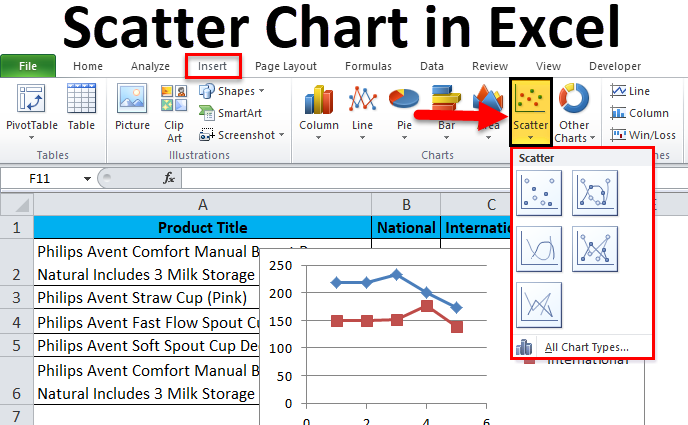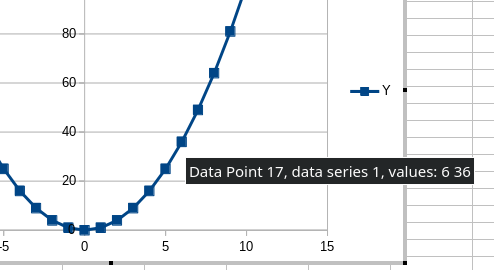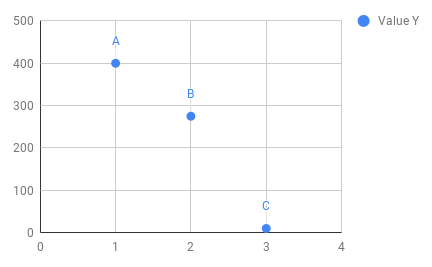

The size of the data marker indicates the value of a third variable.
 A Bubble Chart is a type of xy (scatter) chart. When you arrange your data, place x values in one row or column, and then enter corresponding y values in the adjacent rows or columns. This chart shows uneven intervals - or clusters - of data and is commonly used for scientific data. An XY (Scatter) Chart either shows the relationships among the numeric values in several data series or plots two groups of numbers as one series of xy coordinates. You can include volume in a high-low-close or open-high-low-close chart. A stock chart that measures volume has two value axes: one for the columns that measure volume, and the other for the stock prices. You must organize your data in the correct order to create this and other stock charts. This chart can also be used for scientific data, for example, to indicate temperature changes. The High-Low-Close Chart is often used to illustrate stock prices. Each ring of the doughnut chart represents a data series. Like a pie chart, a Doughnut Chart shows the relationship of parts to a whole, but it can contain more than one data series. To make small slices easier to see, you can group them together as one item in a pie chart and then break down that item in a smaller pie or bar chart next to the main chart. It always shows only one data series and is useful when you want to emphasize a significant element.
A Bubble Chart is a type of xy (scatter) chart. When you arrange your data, place x values in one row or column, and then enter corresponding y values in the adjacent rows or columns. This chart shows uneven intervals - or clusters - of data and is commonly used for scientific data. An XY (Scatter) Chart either shows the relationships among the numeric values in several data series or plots two groups of numbers as one series of xy coordinates. You can include volume in a high-low-close or open-high-low-close chart. A stock chart that measures volume has two value axes: one for the columns that measure volume, and the other for the stock prices. You must organize your data in the correct order to create this and other stock charts. This chart can also be used for scientific data, for example, to indicate temperature changes. The High-Low-Close Chart is often used to illustrate stock prices. Each ring of the doughnut chart represents a data series. Like a pie chart, a Doughnut Chart shows the relationship of parts to a whole, but it can contain more than one data series. To make small slices easier to see, you can group them together as one item in a pie chart and then break down that item in a smaller pie or bar chart next to the main chart. It always shows only one data series and is useful when you want to emphasize a significant element. 
A Pie Chart shows the proportional size of items that make up a data series to the sum of the items.A Line Chart shows trends in data at equal intervals.Stacked bar charts show the relationship of individual items to the whole. Categories are organized vertically, values horizontally, to focus on comparing values and to place less emphasis on time. A Bar Chart illustrates comparisons among individual items.The 3-D perspective column chart compares data points along two axes. Stacked column charts show the relationship of individual items to the whole. Categories are organized horizontally, values vertically, to emphasize variation over time. A Column Chart shows data changes over a period of time or illustrates comparisons among items.

By displaying the sum of the plotted values, an area chart also shows the relationship of parts to a whole.
An area chart emphasizes the magnitude of change over time.








 0 kommentar(er)
0 kommentar(er)
